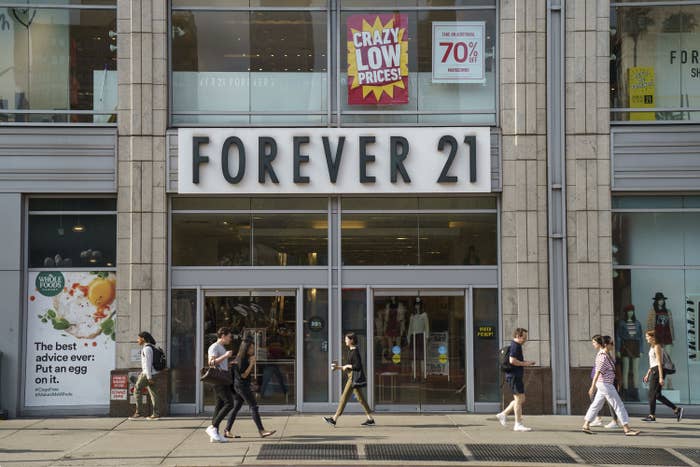
Iconic teen retailer Forever 21 said it would file for Chapter 11 bankruptcy on Sunday, as the company grapples with low sales, online competition, and changing consumer tastes. The retailer will close up to 178 stores in the United States, as well as ceasing brick-and-mortar operations in 40 countries, including Japan and Canada.
“Any potential paths we are considering are meant to strengthen Forever 21 and does NOT mean Forever 21 is going out of business,” Forever 21 CEO and founder Do Won Chang told stores in an email on Sept. 12. “We will continue to operate, providing customers with great service and the curated merchandise they love and expect from Forever 21.”
Forever 21 will continue to operate online, and in many of its physical stores across the United States and Latin America.
The Chapter 11 bankruptcy comes amid dwindling sales and struggles by the Chang family to sort out the company’s finances. After launching with one store in Los Angeles in 1984, Forever 21 grew into a mall staple, peaking at 700 outlets worldwide. But today, the company faces similar challenges to the ones that sent chains like Toys ‘R’ Us, Radio Shack, JCPenney, and Sears into turmoil — how to stay profitable as foot traffic becomes less important.
Forever 21 leans heavily into real estate. The company is mall chain Taubman Properties' largest tenant, making up 4.3% of its total square footage. Its stores — averaging at around 34,000 square feet — are much larger than the stores of Taubman’s second-largest tenant, H&M, which store average 20,700 square feet.
Many of its stores are connected by onerous leases to malls, which have suffered decreased traffic and sales as consumer patterns change. A former employee told BuzzFeed News that a quick review of a handful of stores in the Los Angeles area showed Forever 21 paid anywhere between 20% and 40% of store sales on rent. Retail stores typically pay between 10% to 15% of sales on rent.
And in the face of these challenges, many Forever 21 stores posted negative double-digit sales compared to last year, a former employee who asked to remain anonymous told BuzzFeed News. In June, weekly year-to-year sales had decreased around 12% to 13%, said the source.
Vornado Realty told investors in July that it would not renew its lease with Forever 21 for its New York City Union Square store, but, nevertheless, the retailer will keep two of its locations on Broadway and Seventh Avenue.
“I think they went into ventures and business without looking into what would be feasible in terms of liquidity or what stores would be able to turn a profit after they factor in salary and rent,” a source told BuzzFeed News.
The company has also fallen behind competitors online. Forever 21 only recently launched a ship-to-store option for online orders, for example, while competitors like H&M and Zara were far ahead in bridging online and brick-and-mortar retail. Its stores are notoriously filled with merchandise from old seasons and unpopular products. The company has recently launched several lines with licensed logos from Hot Cheetos to the US Postal Service that have fallen flat with consumers.
While the bankruptcy filing means that Forever 21 isn’t closing shop, it has a long road ahead to correct course in a competitive retail environment. The retailer hired Latham & Watkins LLP this year to help renegotiate its real estate leases and Alvarez & Marsal to overhaul the company’s operations, according to the Wall Street Journal. It also sold its Los Angeles headquarters building for $166 million, according to the Los Angeles Business Journal. It also took out a $500 million loan from JPMorgan Chase in 2017.
now i see why forever 21 is going bankrupt
When ppl ask why forever 21 going bankrupt
forever 21 is so damn ugly
